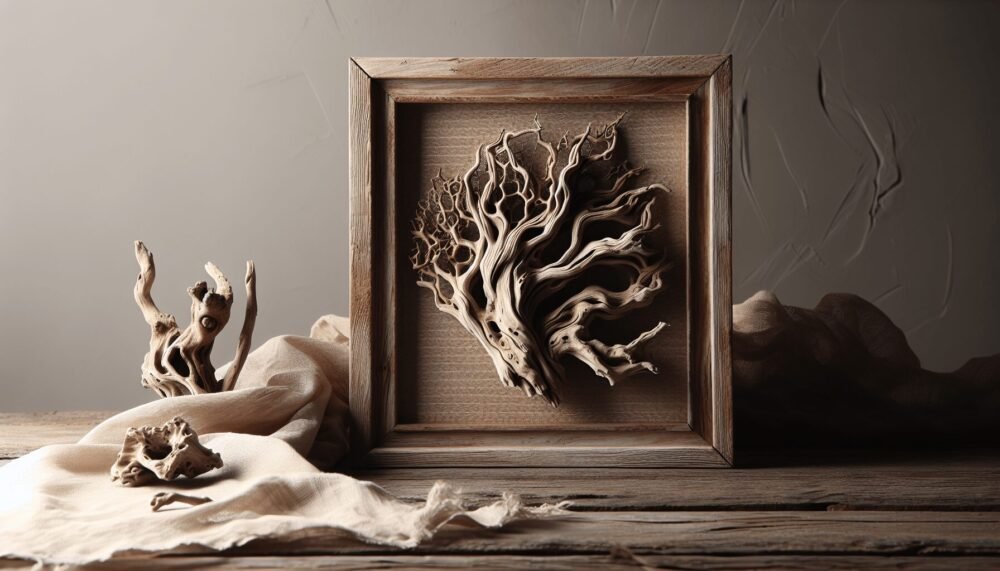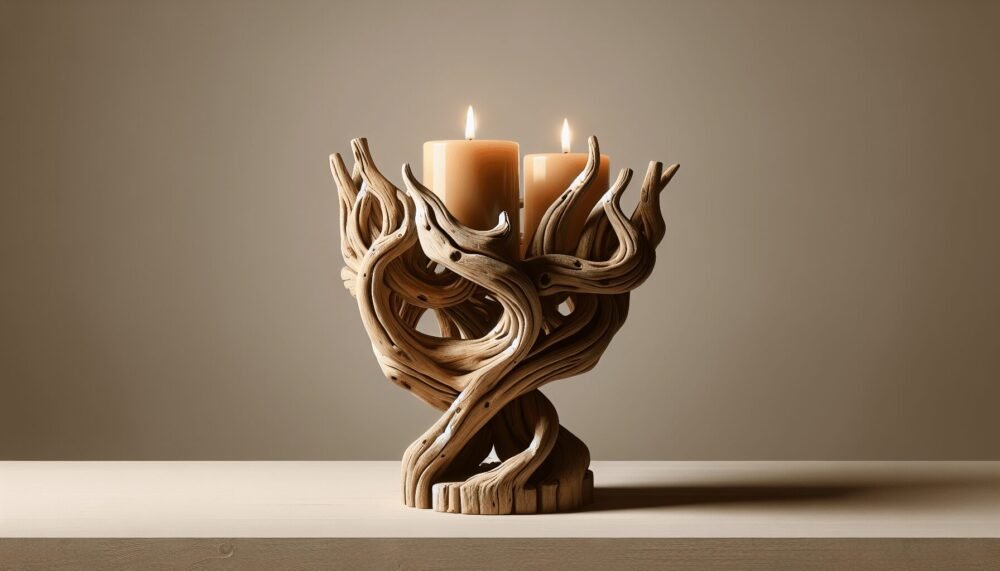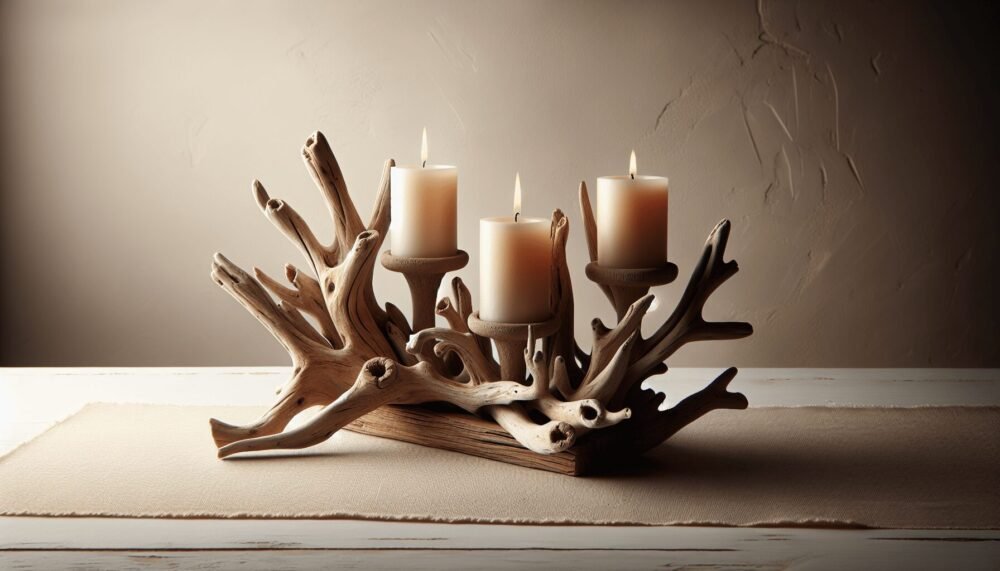Creating charming driftwood houses is a delightful and fulfilling hobby that brings a touch of coastal magic into your home. In this article, you’ll learn step-by-step how to gather the perfect pieces, assemble them securely, and add personalized details to create your own unique driftwood miniatures. With a bit of creativity and patience, you’ll be able to transform simple found objects into whimsical seaside décor. Whether you’re a seasoned crafter or just starting out, this guide will ensure that your driftwood houses become treasured pieces of art. Have you ever found yourself strolling along the shore, collecting unique pieces of driftwood, and wondering how you could transform them into something amazing? Driftwood houses are your answer! Not only are they a fantastic way to use those beachcombing finds, but they also add a rustic, charming, and natural aesthetic to any space. Let’s dive into how you can create your very own driftwood houses, step by step.

What is Driftwood?
Driftwood is wood that has been washed onto the shore, either from rivers, lakes, or oceans. Over time, the constant movement of the water shapes and smooths the wood, giving it a distinctive appearance.
Why Use Driftwood?
Using driftwood is not only a great way to recycle natural materials, but it also adds a unique texture and organic look to your handmade crafts. Each piece of driftwood has a story, shaped by the elements, making your creation truly one-of-a-kind.
Gathering Your Materials
Before you start on your driftwood house, you’ll need to gather some materials.
Essential Items
Here is a list of the essential items you’ll need:
| Item | Purpose |
|---|---|
| Driftwood | Main building material for your house |
| Hot glue gun | To firmly attach pieces of driftwood together |
| Small saw or cutter | To cut driftwood pieces to the desired size |
| Sandpaper | For smoothing edges and surfaces |
| Paint (optional) | To add color or details to your house |
| Various accessories | Such as tiny windows, doors, and other miniatures |
Finding Driftwood
Look for driftwood at your local beach, riverbank, or lake shoreline. Make sure you gather various sizes and shapes to give your house a more interesting and diverse appearance. Always check local regulations to ensure it’s permissible to collect driftwood in that area.
Preparing the Driftwood
Before diving into the construction, it’s essential to prep your driftwood.
Cleaning the Driftwood
First, clean your driftwood. Rinse it thoroughly with water to remove any dirt or sand. If the pieces are exceptionally dirty, scrub them gently with a brush. Let the wood dry completely before moving on to the next steps.
Cutting and Sanding
Once dry, use your small saw or cutter to trim the pieces to the sizes needed for your house. Sand any rough edges to ensure a smoother finish and to make gluing easier.
Designing Your Driftwood House
Planning Your Design
Sketch out your design or have a mental blueprint of what you want your driftwood house to look like. This plan should include the layout, size, and any additional features like windows or chimneys.
Assembling the Base
Start by laying out the foundation of your house. This might be a simple rectangle or any other shape that fits your design. Make sure the pieces fit well together and that you’re happy with the arrangement.
Constructing the Walls
Building the Structure
Once the base is set, start attaching driftwood pieces to form the walls. Use your hot glue gun to secure each piece thoroughly. It’s important to work slowly, ensuring each piece is firmly attached before moving to the next.
Creating Openings
As you build the walls, remember to leave spaces for windows and doors. You can use smaller pieces of driftwood to frame these openings and give them more detail.
Adding Details and Accessories
Windows and Doors
For a more detailed look, consider adding small, pre-made windows and doors. These can often be found in hobby shops or made from other materials you have at home. Glue them onto your driftwood structure where you’ve left openings.
Roof Construction
Once the walls are complete, it’s time to add the roof. This can be a single piece of driftwood or several smaller pieces. Secure them firmly with hot glue, ensuring they align well to give your house a finished look.

Finishing Touches
Painting and Decorating
If you wish to add some color to your driftwood house, use paints to accentuate features like windows, doors, or the roof. You can also leave it natural for a more rustic look.
Detailed Accessories
Adding tiny accessories like a mini mailbox, walkway, or even a small wooden fence can elevate the look of your driftwood house. These details can be crafted from other found materials or purchased from craft stores.
Displaying Your Driftwood House
Choosing a Location
Decide where you’d like to display your new creation. Driftwood houses make fantastic centerpieces for coffee tables, mantelpieces, or garden sheds. The natural, rustic look can complement a variety of decor styles.
Proper Lighting
Consider placing your driftwood house somewhere with good lighting to highlight its unique features. Natural light can enhance the texture and details of the driftwood.
Maintaining Your Driftwood House
Cleaning and Care
Every once in a while, gently dust your driftwood house using a soft brush or cloth. Avoid using water or chemical cleaners, as these can damage the wood or affect any paint you may have used.
Repairing Damage
Should any pieces come loose, don’t worry. Simply reattach them using your hot glue gun. Ensuring a firm bonding will keep your driftwood house looking great for years to come.
Benefits of Crafting Driftwood Houses
Environmentally Friendly
Creating driftwood houses is an eco-friendly way to use materials that might otherwise be left to decompose. It’s a form of upcycling that turns natural debris into beautiful art.
Therapeutic Activity
Engaging in a hands-on project like this can be incredibly therapeutic. It offers a break from screens and helps to refocus your mind on a relaxing, creative task.
Unique Home Decor
No two pieces of driftwood are the same, so each house you make will be unique. This means your decor is not only handmade but also impossible to replicate exactly.
Sharing Your Driftwood Houses
Gift Ideas
Driftwood houses make wonderful, personalized gifts for friends and family. They can particularly be appreciated by those who love coastal themes or rustic decor.
Selling Your Creations
If you find yourself really enjoying this hobby, you might consider turning it into a small business. Selling your driftwood houses at local craft fairs, online marketplaces, or social media can be a rewarding way to share your talent with a broader audience.
Troubleshooting Common Issues
Pieces Not Fitting
If you find your driftwood pieces aren’t fitting together well, try sanding them down more or rearranging them until they align better. Don’t force pieces together, as this can cause breaks and an unstable structure.
Glue Not Holding
If hot glue isn’t holding the driftwood as securely as you’d like, try using a stronger adhesive such as wood glue. Allow ample drying time for stronger adhesion.
Uneven Base
If your base seems wobbly or uneven, you can add small rubber pads or felt underneath to stabilize it. Alternatively, sand the bottom until it’s even.
Inspirational Ideas for Your Driftwood Houses
Themed Designs
Consider creating themed driftwood houses, such as beach cottages, fairy houses, or rustic cabins. Adding elements that align with the theme can make each house even more special.
Seasonal Styles
Crafting driftwood houses that fit different seasons (such as a snowy roof for winter) can also be a fun way to keep your decorations fresh and engaging throughout the year.
Combining Other Natural Elements
Integrate other natural materials like seashells, pebbles, or dried flowers to enhance the look of your driftwood house. These additions can help tell a story and add more character to your creation.
Resources and Inspirations
Online Tutorials
Numerous online tutorials can provide further inspiration and detailed steps for creating driftwood houses. Websites like YouTube, Pinterest, and crafting blogs are great places to start.
Community Workshops
Look out for community workshops focusing on driftwood crafts. These can offer hands-on experience and the opportunity to learn from other enthusiasts.
Books and Magazines
Crafting books and magazines often have sections dedicated to driftwood art, filled with tips, ideas, and step-by-step guides to inspire your next project.
Conclusion
Building driftwood houses is a rewarding and enjoyable way to bring a piece of nature into your home. With some basic materials, a little creativity, and a few hours of your time, you can transform simple pieces of driftwood into charming, rustic miniatures that tell a story. Whether you’re gifting them, selling them, or keeping them for yourself, the joy of creating something with your hands is truly unmatched. So next time you’re at the beach, collect some driftwood and let your imagination run wild. Happy crafting!








